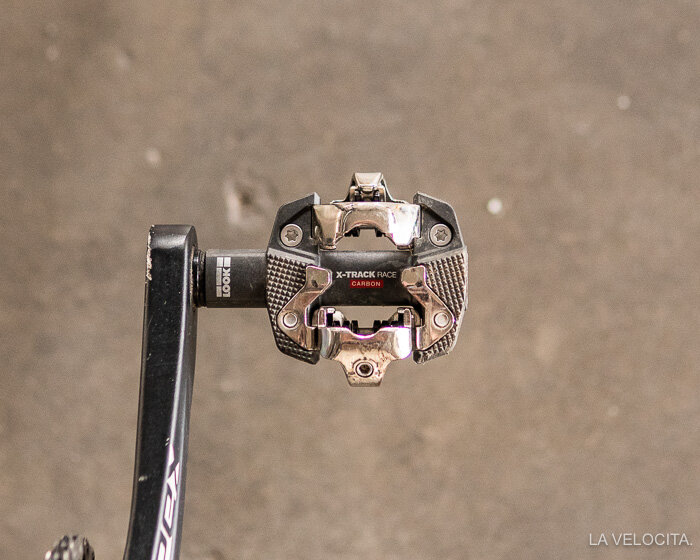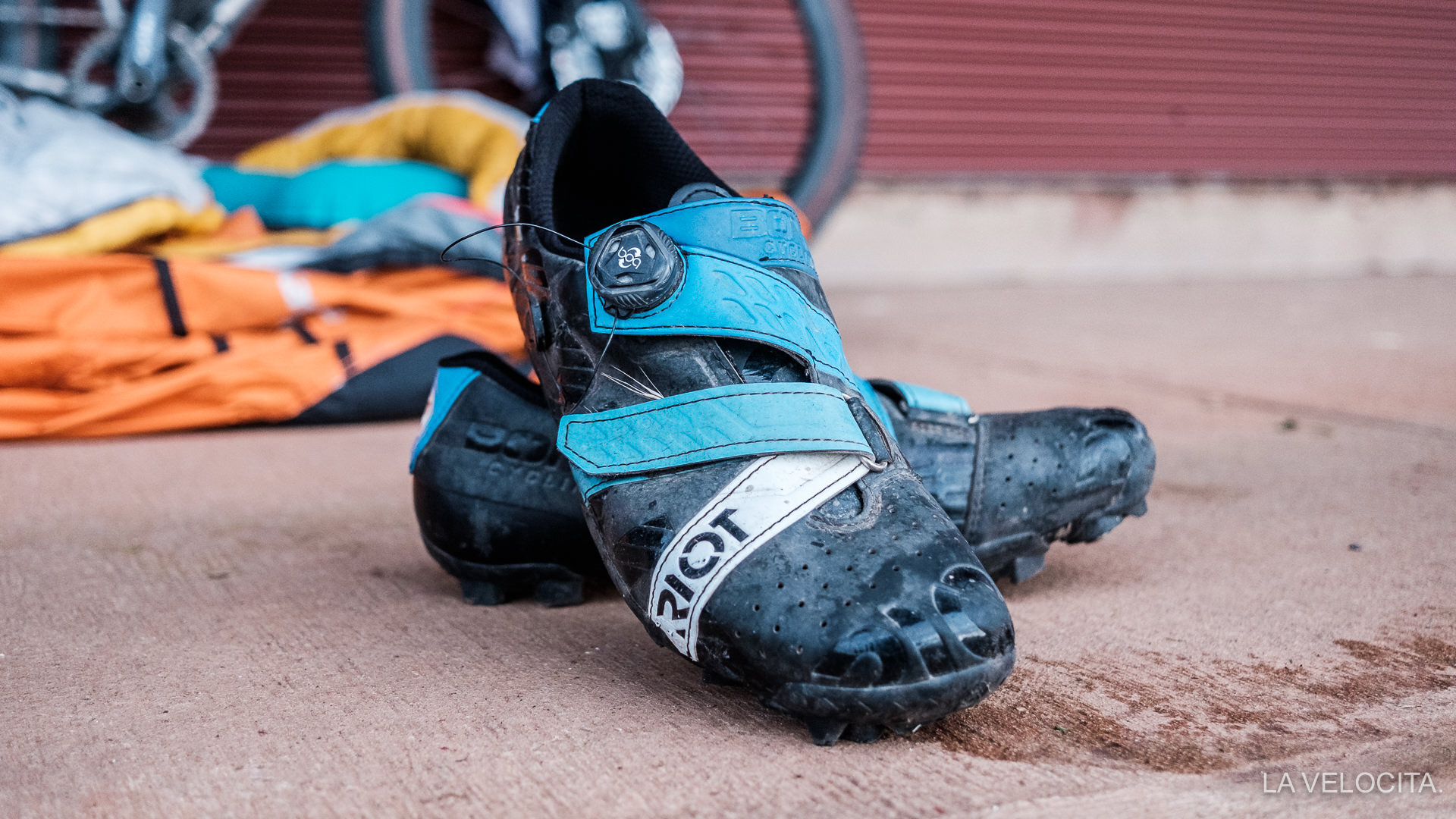Look X-Track Race Carbon pedal review

Look has made a pedal system that might make you want to switch systems. I did.
Words and Images - James Raison
My initial reaction to reviewing some Look X-Track Race Carbon pedals was… uhhh nahhhh… I had my Shimano XTR pedals (2015 model year) and my cleats are dialled to perfection already so I wasn’t keen on disrupting the setup. Then I looked into the Look X-Tracks and saw they’re SPD cleat compatible. Now you’re talking!
A set landed at LV-HQ, got bolted into my Grove R.A.D and have been subjected to some months of gravel pummelling. In short, they’re not just an alternative to XTR pedals, they’ve become my preferred platform.
ABOUT
Weight - 175 g per pedal, 200 g including cleats
Axle - Chromoloy +
Platform - Carbon
Stack height - 16.8 mm
Platform area - 515 mm²
Install is bog-standard-pedal with an 8 mm hex key getting them onto a crank, and a 3 mm key adjusting tension. That’s all there is to it. I did immediately notice that the pedals don’t spin freely straight out of the box and took a couple of rides for the grease to get more compliant. They still don’t spin freely as most other pedals though.
THE RIDE
I’ll put the major drawcards of the system up front: large platform makes for a great pedal feeling under load, engagement is easy, and the mechanism is impressively secure at holding you in.
Let’s begin with the platform size and its effect on the ride. Switching between road and MTB pedals regularly has made me acutely aware of how important contact area between shoe and platform is. My XTR pedals have long felt like a small contact area, which they are. You feel the pressure directly beneath the ball of your foot but the rest of the shoe feels a little like it’s floating. The LOOK X-Tracks, by contrast, feel closer to the large contact area of a road pedal. Not the same, but closer. The carbon platform around the SPD mechanism touches the tread of the shoe that surrounds the cleat much more than XTRs do. The end result; a firm and stable feeling when you pedal. Power transfer is dialed up and pressure is spread more across your foot..
Platform gainz
Cleat engagement is a cinch, easily sliding in the the familiar SPD clunk. Once clipped in, you’re staying firmly put. My months of riding with the LOOK X-Tracks were mostly spent on an aggressive gravel bike with 650bx48mm tyres which give it low ground clearance. I regularly borked the pedals and shoes on rocks, fallen timber, and all kinds of other obstructions and didn’t have a surprise disengagement once. Intentional disengagements - ie, clipping out - is easy thanks to some release guides on the platform levering you out when you twist. The secure engagement meant I kept tension quite low, thus giving you confidence to hammer the pedals knowing you can twist out quickly. Look has dialled in 6° of float which is a good intermediate, feeling neither locked in or sloppy. I like having that amount of float, especially when riding a loaded bike where your pedalling can be a little awkward.
The Look pedals haven’t lived an easy life
Another noteworthy strength is the pedal’s total silence. My XTRs have creaked incessantly since I started using them unless I rub some chain lube into their outer, and some on my cleat.
It might be too early in testing to comment on reliability, but I’ve nonetheless been pleased with how much punishment the Look X-Tracks have taken. They’ve been smashed into a lot of solid objects and been subjected to some of South Australia’s insidious rural dust while bikepacking. Then again, MTB pedals are built for a brutish lifestyle so we’ll see how they are in a couple of years.
Look’s X-Track Race Carbons sit in roughly the same price band as Shimano’s XT, Time ATAC XC6, and Crank Brothers Egg Beater 3s. The value proposition for the Looks doesn’t stand out as such, but the use of ubiquitous SPD cleats and their excellent ride dynamics absolutely make them a good option.
THE TEARDOWN
After some tough months pedal-striking their way around South Australia, I got a mechanic to perform an autopsy. They’re straightforward to open up if you have the right tools. I will note that there’s a fair amount of torque on the locking nut keeping everything together which could explain their reluctance to spin freely..
The pedals are constructed with a chromoly spindle, a bushing outboard of the platform, two bearings on the inside, a locking nut and a plastic cap with a chunky rubber o-ring keeping everything protected. Its spindle was plentifully greased and nothing had made its way inside the platform. The mechanic described it as a low maintenance maintenance; with two protected bearings and an effective seal making muck ingress very unlikely.
Overall it was a clean bill of health.
WRAPPING UP
The highest praise to give pedals is that you don’t have to think about them. They simply leave you to get on with your ride. That’s what testing the Look X-Track Race Carbons has been like. Nice to ride, zero maintenance.
Pedals tend to be one of the hardest things to get riders to change, especially once cleat fittings have been done. I’ve stuck with Shimano pedals for so many years because they’re the easiest to live with and I’ve had all my shoes fitted. That said, the LOOK X-Track Race Carbons have demoted my Shimano XTR with their fantastic ride feeling and pragmatic use of Shimano’s excellent and widely available cleat system. They’re now my preference.
Disclosure statement: These pedals were sent by Shift Active Media for review. It’s not a paid review and we don’t get any money from the sale of Look products.










